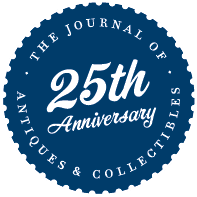Stories of Buried Treasure: History Unearthed
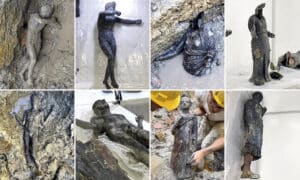
discovered in Italy and preserved in mud.
2,300-year-old bronze statues unearthed in Italy
Archaeologists in Italy discovered more than two dozen beautifully preserved bronze statues from San Casciano dei Bagni, a hilltop town in the Siena province. This site has been excavated by archaeologists exploring the muddy ruins of an ancient bathhouse since 2019. The discovery of the statues is considered an exceptional find that dates to ancient Rome and the thermal baths in Tuscany. The location is situated around 160 kilometers (100 miles) north of Rome. The statues depict Hygieia, Apollo, and other Greco-Roman divinities that adorned a sanctuary before they were immersed in thermal waters, which could be some ritual, “probably around the 1st century AD,” say archeologists. The statues were covered in almost 6,000 bronze, silver, and gold coins and were perfectly preserved by San Casciano’s hot, muddy waters, “almost like as on the day they were immersed.” According to Culture Minister Gennaro Sangiuliano, the statues were taken to a restoration laboratory near Grosseto and will eventually be put up for display in a new museum in San Casciano, as [the statues] represent “a unique multicultural and multilingual haven of peace, surrounded by political instability and war.” Learn more about this find, here: https://youtu.be/dtCjBssyMPI?si=32rmx1lEqPZe3D2h

Viking Burial Site in Norway Brings to Life Remarkable Treasures
Three Viking graves excavated in Norway contain coins from distant lands and an oddly symbolic stone carved to look like female genitalia. The graves, all of which seemed to belong to women, were found on the west coast of Norway by metal detectorists. They date back to the early 800s A.D., during the Viking Age (A.D. 793 to 1066), head archaeologist Søren Diinhoff of the University Museum of Bergen told sciencenorway.no. Some of the jewelry and coins originated as far away as Ireland, England, and the Frankish Empire, which covered much of Western Europe then. Most striking was a rare coin from southern Denmark stamped with a Viking boat on one side and a stag on the other. Learn more about this find, here:
https://www.livescience.com/archaeology/vikings/vulva-stone-and-coin-jewelry-among-remarkable-treasures-discovered-at-viking-burial-site-in-norway?utm_source=flipboard&utm_content=user%2FLiveScience
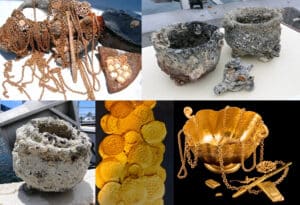
Cargo of Gold
Santa Margarita, a Spanish ship that sank off the coast of Florida about four centuries ago, kept its treasures hidden for many centuries. The Santa Margarita, a Spanish galleon, met its untimely demise off the coast of modern-day Key West in 1622 when it was destroyed by a brutal hurricane. More than 140 lives were lost in addition to a cargo of gold, silver bars, luxury jewelry, and other New World treasures. In addition to its official cargo, the Santa Margarita is believed to have housed contraband and a fortune in “unregistered” treasure to avoid the twenty percent tax imposed by the Spanish king. These items included medical and navigational instruments, gold coins, and precious jewelry, further adding to the riches of this ill-fated vessel. As time passed, the ship’s wood rotted away, and its wreckage and treasure were buried under layers of sand and mud. Some 400 years later, its discovery has unearthed a staggering $25 million worth of sunken treasure. Many of the items recovered from the ship are presently showcased at the Mel Fisher Maritime Heritage Museum in Key West. You can visit Maritime Research & Recovery at https://www.mrronline.com/copy-of-galleries for more information on this ship and its contents.

“Holy Grail of Shipwrecks”
Called the “Holy Grail of Shipwrecks,” the Spanish galleon San José was carrying a treasure of silver, gold, and emeralds when it was sunk after a battle with British ships off the coast of Cartagena, Colombia, in 1708. Three hundred years later, in 2015, the wreck was discovered on the ocean floor, some 3,100 feet below the ocean’s surface. Historical records suggest the ship was carrying wealth accumulated from several of South America’s Spanish colonies, including over 100 steel chests full of emeralds and millions of gold and silver coins believed to be worth up to $20bn in today’s money. Following its launch in 1698, the ship sank in a battle off Isla Barú, south of Cartagena, as it was traveling from the New World to the court of King Philip V of Spain, laden with treasure for the royal coffers. Historians say the ship encountered a British squadron near Barú. In the ensuing battle, the legendary galleon’s powder magazines detonated, destroying it and killing over 500 members of the crew. The government is keeping the exact location of the galleon a secret to deter amateur treasure hunters. Learn more about this find here: https://images.app.goo.gl/Gtz4QzMs2DVLsFsq6.
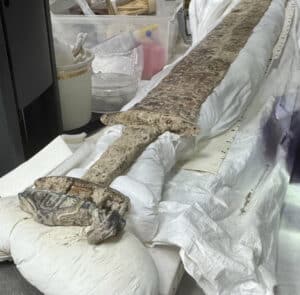
Sixth-Century Sword Unearthed in Anglo-Saxon Cemetery in the UK
Archaeologists recently unearthed a sixth-century sword in a cemetery near Canterbury, England. Lead archaeologist Professor Duncan Sayer of the University of Central Lancashire described the discovery as “really incredible, in the top echelons of swords, an elite object in every way.” Along with decorative patterns and an inscription, the sword has a ring attached to its pommel (the cap at the end of a sword). This ring could symbolize an oath to a king or another high-ranking figure. It indicates that the weapon may have belonged to an elite member of society. The cemetery, whose exact location remains undisclosed to protect the site, has so far revealed 12 graves, though researchers estimate it contains up to 200 burials. Male graves have yielded weapons such as spears and shields, while female burials include brooches, buckles, and knives. Notably, the grave containing the sword also held a gold pendant engraved with a serpent or dragon – an ornament typically associated with high-status women. Archaeologists suggest it may have been an heirloom or a gift from a female relative. Learn more about this find, here: https://archaeologymag.com/2024/12/6th-century-sword-unearthed-in-anglo-saxon-cemetery/
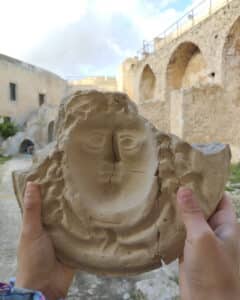
masks dating back to the early
1st century BCE has been found in ancient Finziade, Sicily.
Medusa Mask Matrix Found in Sicily
A plaster mold of Medusa has been discovered in the archaeological area of Finziade, modern-day Licata, in southwestern Sicily. The negative impression of the gorgoneion, the face and serpent hair of the gorgon Medusa, was a matrix used to produce masks or decorative reliefs. The matrix was one of several discovered in an excavation of a home from the late Republican era. In its last stages of occupation, the early 1st century B.C., it was converted for use as a manufacturing operation. The different matrices found at the site indicate it was an artisanal production facility for masks.
The discovery of this mask mold provides insights into the symbolic and cultural aspects of the region during the Roman period. The production of masks may have been linked to theatrical, ritual, or decorative contexts, underscoring the intersection between daily life and spiritual beliefs in antiquity. Founded in 282 B.C. by Finzia, tyrant of Agrigento, Finziade was the last colony founded by the Greeks in Sicily. He built it in direct imitation of classical Greek urban design and then implanted a ready-made population when he destroyed the city of Gela and forcibly moved its residents to his new city. Two decades after its founding, Finziade would be conquered by Rome, along with its powerful Carthage-aligned neighbor Agrigentum, in the First Punic War. It established a strong alliance with Rome, which served it well as the Second Punic War-ravaged Sicily, and today, the remains of Finziade survive in exceptional condition, making it one of the best-preserved cities in late Hellenistic, early Roman Sicily. Learn more here: https://www.thehistoryblog.com/archives/72268.
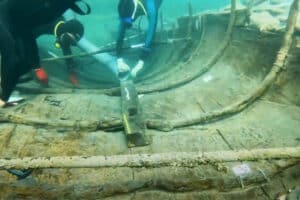
Phoenician-era shipwreck
Archaeologists have raised a 2,600-year-old shipwreck from the waters near southeastern Spain near the town of Mazarrón. The 27-foot-long wreck, which had been carrying a load of lead ingots when it sank, is believed to have belonged to the Phoenicians, a group of maritime traders and merchants who inhabited the eastern Mediterranean coast from around 1500 to 300 B.C.E. Mazarrón II is one of the few Phoenician-era shipwrecks that’s still largely intact, and it could offer new insights into Phoenician shipbuilding techniques and culture, archaeologists say. “It will tell us what types of wood were used to build the boat, where it was built, what navigation was like at the time, the degradation processes of the wood, the contamination that may have occurred in shallow waters.” Between September and November 2024, a team of 14 divers carefully brought the wooden shipwreck to the surface, piece by piece. Now, those fragments are going to a lab at the Museum of Underwater Archaeology in Cartagena for conservation and reconstruction. That work is expected to take at least four years. Read more about this find here: https://youtu.be/YPwGi3sEFjo.

Gold Ring Unearthed on Ancient Road in France
Around the second or third century C.E., a gold ring bearing the likeness of the Roman goddess Venus was lost on a road in what is now Brittany, France. The newly uncovered ring dates to Brittany’s occupation by the Romans, which began with Julius Caesar’s conquest of the region in 56 BCE.
The exact circumstances of the jewelry’s creation and how it ended up at the crossroad are unknown, but the ring and a host of similarly ancient artifacts unearthed nearby provide tantalizing insights into the region’s history. The gold band, which survived in an exceptional state of preservation, “contains an engraved nicolo, or “onyx agate cut to leave a thin layer of faint whitish-blue over a thicker layer of black,” according to the Metropolitan Museum of Art. The nicolo gem depicts Venus Victrix, or Venus the Victorious, a name for the Roman goddess that emphasizes her association with imperial power and romantic conquests alike. In the ancient era, Venus Victrix, who borrowed her ties to military might from Ishtar, the Mesopotamian goddess of war and sexual love, was often shown in full armor. Roman generals “were known to call on Venus Victrix before battle and offer devotion to her cult,” wrote Katie White for Artnet in 2022. Learn more at https://www.smithsonianmag.com/smart-news/exceptionally-well-preserved-gold-ring-featuring-venus-the-victorious-unearthed-on-ancient-road-in-france-180985770/
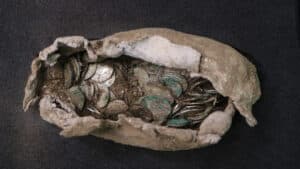
A Nuclear Discovery
Archaeologists in the United Kingdom recently unearthed a 1,000-year-old treasure consisting of 321 silver coins, found in an unusual location: a construction site for a nuclear power plant in Suffolk, England. The coins were issued between 1036 and 1044, predating the Magna Carta by nearly 200 years and the Battle of Hastings by a few decades. They were found in “mint condition” in a lead and cloth package, a bundle researchers have compared to a Cornish pasty. “The hoard was found at the junction of two early medieval field boundary ditches, a location which hints at deliberate concealment,” stated the representative from Oxford Cotswold Archaeology (OCA). “The coins were carefully placed inside a textile object, possibly a purse, and then wrapped tightly in lead sheeting.” The coins within the hoard were issued during the reigns of three House of Wessex kings: Harold I (1036-40), Harthacnut (1040-2), and Edward the Confessor (1042-66). Most of the coins were struck in London, while others were made in the English towns of Thetford, Norwich, Ipswich, Lincoln, and Stamford. Archaeologists believe that the owner of the coins may have been robbed during a regime change, a turbulent period in English history, possibly when Edward was coronated in 1043. Archaeologists say the bundle of coins would have been enough to buy several cows in the 1000s. More information is available here: https://www.sci.news/archaeology/suffolk-hoard-13577.html.
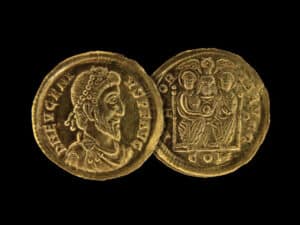
discovered in a Roman-era hoard in Luxembourg.
Ancient Roman Gold Treasure
Archaeologists in Luxembourg have uncovered a treasure trove of 141 ancient Roman gold coins dating back to the late fourth century. The discovery made in the village of Holzthum is being hailed as one of the most significant finds in the region’s history. The coins, known as solidi, were introduced as a stable currency during the fourth century and are remarkably well-preserved. Each coin weighs about 0.16 ounces (4.5 grams) and bears the portraits of nine Roman emperors. Among them are rare coins issued during the brief reign of Emperor Eugenius, who ruled the Western Roman Empire from 392 to 394 CE. The coins were found near the remains of a Roman fortified tower known as a burgus, which once served as a military outpost. Nearby graves and other artifacts were also uncovered, offering a glimpse into life along the Roman Empire’s frontier defenses in Gallia Belgica, a region encompassing modern Luxembourg. Emperor Eugenius, whose coins are among the most valuable in the hoard, is remembered for his short and turbulent reign. He was declared emperor by a powerful general following the suspicious death of Emperor Valentinian II. His coins remain some of the rarest relics from this period. Experts estimate the value of the hoard at approximately $322,000. Discover more here https://archaeologymag.com/2025/01/roman-gold-coins-in-luxembourg/
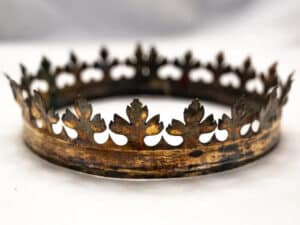
Medieval Crowns and Scepters Hidden Inside the Walls
In the crypts of a Lithuanian cathedral, researchers have discovered a trove of royal treasure: crowns, jewelry, and a scepter that belonged to several Lithuanian-Polish monarchs from the 15th and 16th centuries. The regalia had been hidden for 85 years “in a secret hiding place” since it was stowed for safekeeping beneath the Vilnius Cathedral in southeastern Lithuania at the start of World War II. The collection includes a crown of Alexander Jagiellon, the king of Poland, between 1501 and 1506. It also features crowns, chains, medallions, scepters, orbs, and rings belonging to Elisabeth of Austria (also known as Elzbieta Habsburzanka) and Barbara Radziwill – the first and second wives of Sigismund II Augustus, who served as king of Poland in the mid-1500s. In 1931, a flood damaged the cathedral’s crypt, exposing the three rulers’ coffins. The funerary regalia was then gathered from the burials.
Researchers found the accessories wrapped in newspapers dated 1939, tucked in a cavity beneath a staircase in the crypt. Historians knew from records that the cache of regalia existed, but attempts to find it haven’t been successful until now.
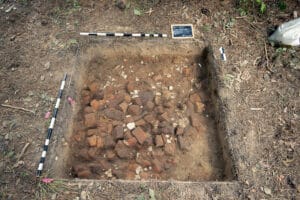
Lost Remnants of America’s First Soldiers
British General Charles Cornwallis ordered the burning of a Continental Army barracks in Williamsburg, Virginia, in 1781. What he hoped to destroy forever was recently found by archaeologists, giving experts a fresh perspective on the life of Continental soldiers during the Revolutionary War. As crews made way for the construction of a new sports center on Colonial Williamsburg Foundation property, archaeologists first visited the area to see if 18th century maps and period documents referencing the construction of barracks in 1776 through 1777 produced any archaeological fruit. They have plenty to pick from, as the nearly four-acre site has artifacts showing both the barracks and the everyday life of soldiers. The barracks, which were burned by British troops while they moved towards Yorktown in 1781, were said to house up to 2,000 soldiers and 100 horses. One of the more intriguing items discovered is the bounty of lead shot with toothmarks. The foundation’s blog post says the shot was chewed on by bored soldiers not only to help pass the time but also because the lead had a sweet taste. Experts hope that as they excavate additional sections of the barracks, they discover more about the way of life for Continental Army soldiers in the late 1770s.
Find out more at https://www.washingtontimes.com/news/2024/may/16/revolutionary-war-barracks-found-by-archaeologists/
